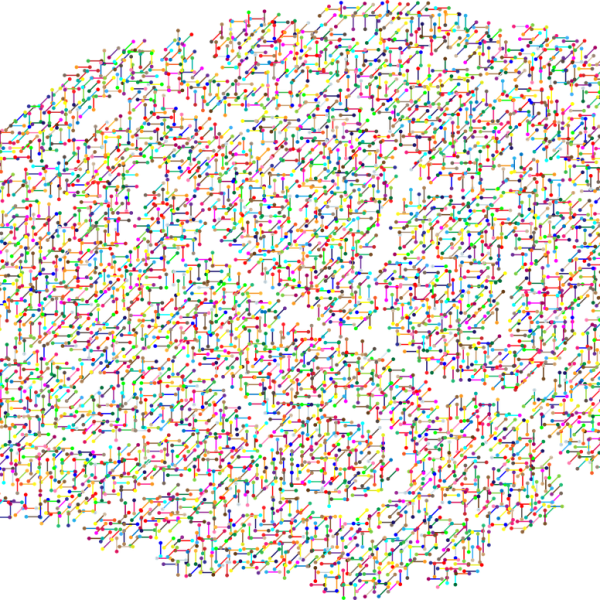The field of human resources is undergoing major transformation as new technologies, changing workforce dynamics and evolving organizational models disrupt traditional HR practices. HR teams today face manifold challenges keeping pace with the rapid rate of change in the modern business environment.
As companies adapt to new realities post-pandemic, HR is being called upon to help drive organizational agility, cultural cohesion, digital dexterity and superior employee experiences. The role of HR is expanding beyond traditional functions like recruitment, compensation and benefits administration to become a strategic driver of business success.
According to Josh Bersin, a leading industry analyst, “The mission of HR is being reinvented. Rather than focusing on service delivery and compliance, HR is becoming an enabler of human and organizational performance.”
This means reimagining HR priorities, capabilities and ways of working to be better aligned with emerging organizational and employee needs. It requires embracing innovations in automation, data analytics and artificial intelligence to transform operational processes.
“Leading HR teams are adopting technologies like robotic process automation, chatbots and machine learning to boost efficiency and free up strategic capacity,” said Bersin. “They are leveraging people data analytics to derive actionable insights enabling fact-based workforce decisions.”
These digital workforce innovations extend across the employee lifecycle from smart recruiting algorithms to personalized career development driven by skills intelligence. The future HR function will be defined by AI-powered talent acquisition, human-machine hybrid service delivery, hyper-personalized employee experiences and technology-enabled continuous performance management.
“AI and analytics are transforming HR from intuition-based to insights-driven to impact key talent outcomes,” observed Elisabeth Joyce, Vice President of Advisory at technology research firm Gartner. However, she noted the technologies are merely enablers supporting human capabilities, rather than replacing people outright.
“The future HR organization will feature dynamic teams of digitally empowered professionals skilled in applying technologies like AI and analytics to solve complex workforce challenges and enable great employee experiences,” Joyce commented.
The Importance of People Analytics
A major facet of the HR transformation is the rise of people analytics to systematically measure and improve workforce performance. According to Josh Bersin, applying analytics to HR is crucial given people represent the biggest source of competitive advantage for most companies.
“Leading organizations are investing in HR data science teams who can translate employee data into insights leaders can act upon,” he said. “This is enabling more predictive and productive HR programs.”
Erik van Vulpen, founder of the Analytics in HR community, predicts 100% of larger firms will have dedicated HR analytics teams within five years. These teams fuse data science, behavioral psychology and HR expertise.
“People analytics will increasingly merge with operations research, machine learning and data visualization to extract powerful and actionable insights from employee data,” commented van Vulpen. “This empowers strategic decision-making based on statistical analysis rather than gut feeling.”
For instance, by linking training data to individual and team performance metrics, HR can determine the most effective upskilling investments. This allows pivoting spend from ineffective to impactful learning programs.
People analytics is also transforming hiring by applying AI algorithms to candidate data to remove biases and match talent to the right roles. According to Bersin, algorithmic screening can reduce time to hire by up to 75% while boosting candidate quality by 20%.
At pharmaceutical firm GSK, analytics revealed positions where diversity hiring efforts were failing. This enabled targeted interventions improving representation. Procter & Gamble automated decision tools to mitigate biases and expanded diverse candidate slates.
As data generation proliferates across processes like employee surveys, wellbeing monitoring and real-time engagement measurement, analytics becomes instrumental in synthesizing insights. Machine learning discerned at-risk employees at Adobe enabling supportive interventions. Ford applies sentiment analysis to identify and address employee pain points.
“HR is central to curating and deriving value from the wealth of people data companies possess today,” stated Emma Speight, HR Information Management Lead at The Myers-Briggs Company. “But technology is not a silver bullet – success requires the human skills to ask the right questions, interpret findings and translate analytics into meaningful action.”
The Democratization of Learning
Continuous learning is becoming recognized as a critical priority for both employee wellbeing and business performance. This has HR teams spearheading a reskilling revolution powered by artificial intelligence, personalization and peer-based social learning.
Josh Bersin notes learning experience platforms are applying AI to create customized development pathways, recommend relevant content and enable skills-based career mobility. Machine learning continuously adapts learning to individuals to enhance engagement and proficiency.
For example, mobile telecom company Vodafone uses AI to analyze sales conversations and deliver personalized coaching to hone negotiation techniques. Software firm Atlassian employs machine learning to guide engineers pursuing technical qualifications via optimal combinations of learning formats including courses, labs and mentoring.
“Employees are demanding self-directed, mobile-first development experiences that fit their schedule,” said Bersin. He highlighted the enormous market growth in on-demand training apps and microlearning designed for continuous upskilling.
Technologies like virtual reality are also transforming learning from passive to immersive. Walmart trains staff using VR simulations placing them in lifelike retail scenarios to build skills. Aviation company GE Aviation leverages VR for hazardous environment worker training.
Consumer goods giant Unilever built an online peer coaching platform called U-Learn tapping collective wisdom for mass upskilling. The company credits the approach with enhancing capability building in a scalable, inclusive and cost-effective manner.
“Social and collaborative learning will become as integral to workforce development as formal training,” predicted Bersin. “This represents a major cultural shift from traditional siloed training towards empowering workers to teach and learn from each other.”
Designing Engaging Employee Experiences
With new generations entering the workforce, designing personalized, technology-enabled employee experiences is becoming a differentiating HR capability. Employees now expect consumer-grade digital tools and apps for navigating workflows, accessing services and developing their careers.
“Orchestrating a holistic worker experience across the employment lifecycle is becoming as important as products and services,” said Josh Bersin. He suggested the chief human resources officer role is evolving into “chief employee experience officer.”
User experience design principles from consumer settings are now being applied to create simple, intuitive HR systems. This spans digitizing onboarding, streamlining performance management cycles, and creating self-service experiences via worker apps and chatbots.
For example, technology firm Intuit implemented the AI-powered Luna chatbot to handle common employee inquiries around payroll and expenses, freeing HR staff for higher value interactions. Consumer goods company Reckitt created a virtual assistant app for employees named Addy with productivity, wellbeing and social connectivity features.
Augmented reality and wearable technologies are also entering the workplace to assist frontline workers. Logistics company DHL provides AR smart glasses giving warehouse pickers digital guidance that has improved productivity by 15%. Marriott hotel staff utilize AR headsets to access translations, guest information and operating procedures.
“The future workplace experience will blend physical and digital channels anchored around mobile HR apps that integrate access to services, knowledge, transactions and collaboration,” said Elisabeth Joyce of Gartner.
The pressing need to support employee wellbeing and flexible work-life integration was propelled by the pandemic. Increasingly HR teams recognize nurturing a healthy, resilient and motivated workforce requires designing holistic experiences that support employees both professionally and personally.
“The lines between work and life have been permanently blurred,” remarked Josh Bersin. “Providing personalized benefits, wellness resources and flexibility is becoming the new competitive differentiator for attractors talent.”
Almost all employers plan to reallocate budgets into wellbeing programs over the next few years. Bersin anticipates even more emphasis on using technologies like wearables and apps to provide individualized physical, mental and financial wellness interventions based on personal needs.
HR Driving Organizational Agility
The pace of business model disruption continues to accelerate in a climate of exponential technological change. This demands organizations continuously adapt through reskilling workforces, decentralizing decision-making and fostering innovation.
“HR plays a pivotal role nurturing agile cultures where workers feel empowered to learn, experiment and drive change,” said Josh Bersin. He cited examples of companies like Microsoft, Schneider Electric and Standard Chartered Bank retraining the majority of staff in agile methodologies.
This represents a broader trend of HR taking the lead in enterprise-wide agility transformations encompassing structure, leadership, culture, people practices and technology infrastructure.
“HR has stepped up during the continuous disruption of recent years to build more flexible, team-based organizations and skills-based talent models,” commented Elisabeth Joyce of Gartner.
McDonald’s undergone an agility transformation with help from HR guiding significant restructuring, introducing new roles and career paths focused on digital competencies, and creating a culture of experimentation.
Atlassian credits its heavy investment in HR programs nurturing agile leadership, constant reskilling and empowered product teams for its ongoing technology innovation and market success. The company provides Agile coaching across all levels and requires teams to embed designers, engineers and product managers together.
“Agile is as much about transformational culture as practices and tools,” said Bersin. “Leadership development, performance management, learning systems and diversity programs need redesigning to instill agile habits and mindsets.”
Mastering HR Technology
Advances in digital tools present tremendous opportunities for HR to drive strategic impact by automating administrative tasks, applying data-driven insights and delivering consumer-grade experiences.
However, immature technology capabilities remain a major obstacle for HR’s future vision according to many studies. A survey by Oracle found HR professionals spend just 35% of their time on strategic initiatives due to administrative burden.
“HR has no choice but to become a technology power user leveraging solutions to free up strategic capacity and enable new value,” stated Josh Bersin. He highlighted robotic process automation, artificial intelligence, people analytics, learning systems, recruitment tools, and employee experience platforms as investments needed to modernize HR.
This means upskilling existing HR staff in digital literacy and recruiting technology-fluent talent. Bersin noted leading HR teams appoint dedicated Chief Digital Officers to govern technology capabilities and spearhead transformation.
Capabilities in disruptive technologies like blockchain, augmented reality and Internet of Things will also become important for HR to match the direction of the overall business according to Deloitte. Being tech-savvy is critical for HR to earn a seat at the leadership table.
“Technology expertise ensures HR has equal footing to lead and shape the people agenda for the future enterprise,” said Elisabeth Joyce of Gartner. But equally important is maintaining skills in ethics, communications and relationship building as automation increases.
“While disruptive technology will transform HR execution, uniquely human skills in trust, empathy and collaboration will be at the heart of strategic HR leadership,” Joyce concluded.
The Bottom Line
The digitally-driven future of work demands HR elevates its strategic influence like never before. As a navigator for organizational and workforce transformation, CHROs and HR teams are being called upon to set direction, shape culture, develop skills and foster employment experiences for a new age.
“HR’s role must be redefined from service center to strategic advisor and steward of the future workforce,” said Josh Bersin. “This requires embracing technologies, new skills and data-driven insights while keeping people and ethics front and center.”
The seismic changes occurring across business models, labor markets and employee expectations require imagination and courage from HR leaders. But as key enablers of organizational success, it is a time for the function to grasp the opportunity to chart a new course.
“HR sits at the intersection between people, business and technology,” commented Elisabeth Joyce. “This provides the foundation to increasingly lead positive change for both employees and organizations through the future of work revolution.”




